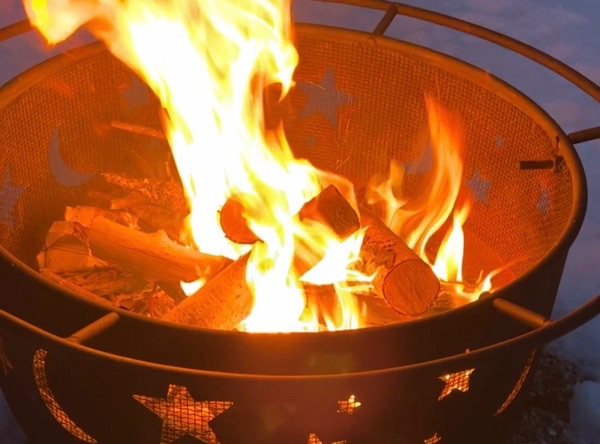
I have always enjoyed our ceremonies of light and dark, here in the cold mid-winter of northern New England.
The winter solstice here is always a time of celebration. For us, it is the shortest “day” in terms of daylight – and the longest night. It is cold here at this time of year.
The solstice gives us hope. From here on out, the days only get longer… and at some point will start to actually get warmer. (We have to go through some much colder periods first, though!)
We celebrate here so often with candles… with fires… with flames… with light to drive away the darkness.
In the Christian tradition, there are the candles of advent, the Christmas trees with their lights, and… today… the many lights that people decorate their houses with. In the Jewish tradition, there is the menorah with its 8 candles that are lit during the days of Hanukkah. In older pagan traditions, there were similar ceremonies of light. Today, in our less religious times, we cover our houses with “holiday lights”. In a school our daughters attended when they were younger, there was a beautiful advent spiral walk with candles.
Many of the ceremonies have different meanings, of course,
Yet each in their own way brings light into a time of darkness.
There is beauty and magic in that.
In Hindu (& assoc ones) tradition, there is Deepavali, which translates to Festival of Lights. But it is not this late – a couple of months earlier. But then all these are from Northern Hemisphere. It will be interesting to know if ancient customs in the South.